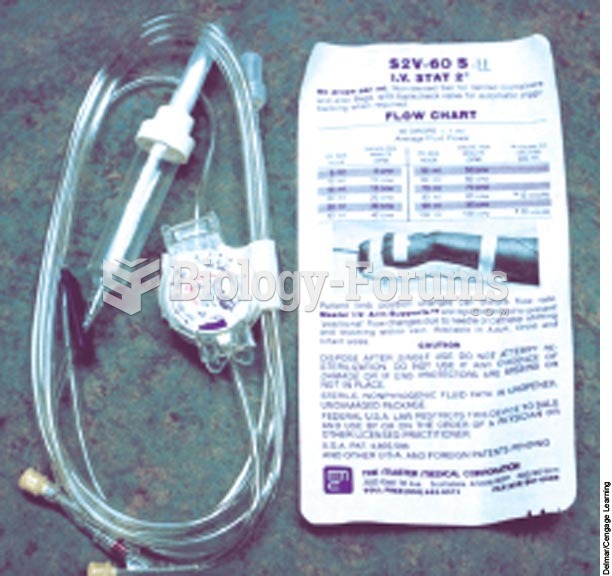|
|
|
In the United States, congenital cytomegalovirus causes one child to become disabled almost every hour. CMV is the leading preventable viral cause of development disability in newborns. These disabilities include hearing or vision loss, and cerebral palsy.
Carbamazepine can interfere with the results of home pregnancy tests. If you are taking carbamazepine, do not try to test for pregnancy at home.
More than 30% of American adults, and about 12% of children utilize health care approaches that were developed outside of conventional medicine.
In most cases, kidneys can recover from almost complete loss of function, such as in acute kidney (renal) failure.
Most childhood vaccines are 90–99% effective in preventing disease. Side effects are rarely serious.







